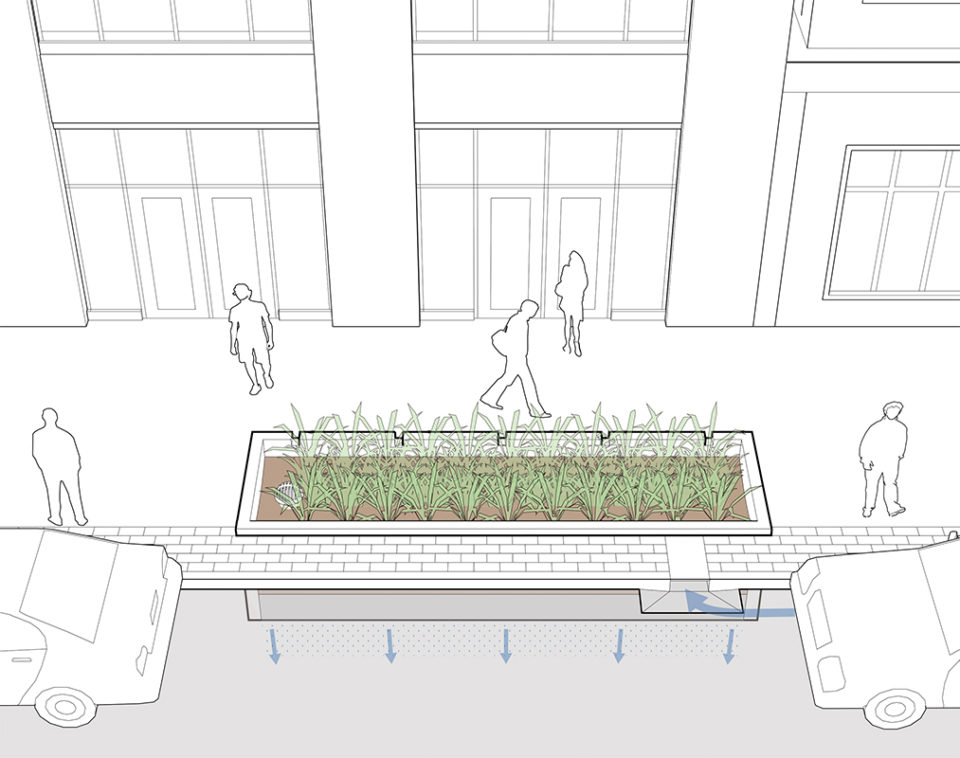Project

Performance measures at the project scale should evaluate how well the stormwater infrastructure meets its specific ecological and hydrological goals, how well the overall street design meets mobility goals, and how the entire project contributes to urban vitality. Project-level performance data can help support scaling up of programs in cities with or without a regulatory mandate to reduce stormwater runoff.
Project-level metrics may be tied to specific funding or regulatory requirements, especially if the project impetus is intended to resolve a specific issue or local need.
Project metrics are powerful tools for demonstrating impacts. Pilot projects should include discrete metrics to communicate benefits; strong data and evaluation is a powerful tool for building public support and leveraging future funding.
Program

Green infrastructure programs are citywide initiatives with implementation deployed at multiple sites in multiple phases. Program scale investment and implementation is often driven by policy commitments, regulatory mandates, or zoning requirements. GSI program performance is measured at the citywide or regional scale and monitored as a connected network. Generally, network performance is required for reporting to state and federal agencies regarding regulatory requirements.
Program-level measurements are often modeled, with variables adjusted based on practice, experience, and data from existing projects. Modeling is often a less expensive metric than monitoring and is accepted by some regulators to demonstrate compliance. In cases where both modeling and monitoring data is available, models can be refined through calibration to predict performance of features under various weather trends.
Monitoring is generally expensive and the results of monitoring can be difficult to interpret due to irregularities with a given site and specific weather events that occur during monitoring. Cities often partner with universities or other groups to perform most resource-intensive performance monitoring.